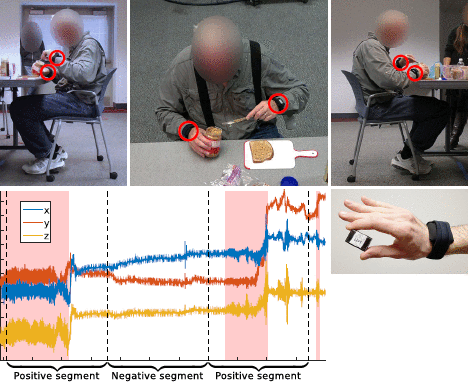Weakly-supervised learning for Parkinson's Disease tremor detection
| Ada Zhang | Alexander Cebulla | Stanislav Panev | Jessica Hodgins | Fernando de la Torre |
IEEE Xplore (September 14, 2017)

Continuous, automated monitoring of Parkinsons Disease (PD) symptoms would provide clinicians with more information to understand their patients' disease progression and adjust treatment protocols, thereby improving PD care. Collecting precisely labeled data for Parkinson's symptoms, such as tremor, is difficult. Therefore, algorithms for monitoring should only require weakly-labeled training data. In this paper, we evaluate five standard weakly-supervised algorithms and propose a “stratified” version of three of the algorithms, which take advantage of knowing the approximate amount of tremor within each segment. In particular, we analyze PD tremor detection performance as training segments increase in length from 30 seconds to 10 minutes, and labels thereby become less precise. As segment length increases to 10 minutes, standard algorithms are not able to discriminate tremor from non-tremor. However, our stratified algorithms, which can make use of more nuanced labels, show little decrease in performance as segment length increases.
Ada Zhang, Alexander Cebulla, Stanislav Panev, Jessica Hodgins, Fernando de la Torre (September 14, 2017). Weakly-supervised learning for Parkinson's Disease tremor detection. IEEE Xplore.
@article{Hodgins:2017:DOE,
author={Ada Zhang, Alexander Cebulla, Stanislav Panev, Jessica Hodgins, Fernando de la Torre},
title={Weakly-supervised learning for Parkinson's Disease tremor detection},
journal={IEEE Xplore},
year={September 14, 2017},
}

